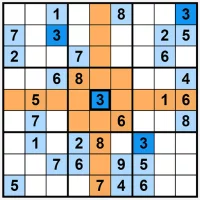Welcome!
Create a free Creekplay account to get access to our wide selection of games in fullscreen. Plus, leave comments and reviews on games to help others.
Best Chess Strategies
3 min read Whether you're an aspiring grandmaster or a chess newbie eager to learn the ropes, Creekplay is the perfect place to hone your strategy and conquer the 64 squares. Today, we delve deep into the world of chess strategies to help you elevate your game. And the best part? You can practice every single one of these strategies right here on Creekplay! September 24, 2023 22:11
1. The Opening: Setting the Stage
Every chess game starts with the opening. Here are some universally recognized opening principles:
Control the Center: The central squares (d4, d5, e4, e5) are crucial. Pawns and pieces that control the center give you more mobility and flexibility.
Develop Your Pieces: Instead of moving the same piece multiple times, aim to get your knights and bishops into the game during your first few moves.
Ensure King Safety: Typically, this means castling at an appropriate time.
2. Middle Game: Tactical Play
This is where the real action begins:
Pins and Forks: A pin is when a piece is immobilized because moving it would expose a more valuable piece behind it. A fork, typically executed by knights, is when a single piece attacks two or more enemy pieces simultaneously.
Recognize Weaknesses: Look for 'holes' in your opponent's position or undefended pieces. Exploiting these can lead to material gain or a tactical advantage.
3. Endgame: The Final Countdown
This is where games are won or lost. Key strategies include:
King Activation: In the endgame, your king becomes a vital offensive piece. Use it actively!
Pawn Promotion: If you can get a pawn to the opposite end of the board, it can be promoted (usually to a queen), giving you a significant advantage.
Zugzwang: A German term where any move a player makes worsens their position. If you can force your opponent into zugzwang, victory is often imminent.
Make your move! Dive into the world of strategies and challenge yourself on Creekplay today. 🎲👑🏁
Chess is more than a game; it's a journey. Embark on yours with Creekplay!
User Comments (0)
Recommended








